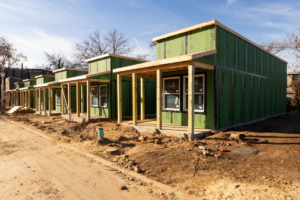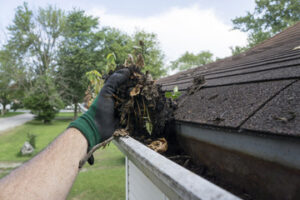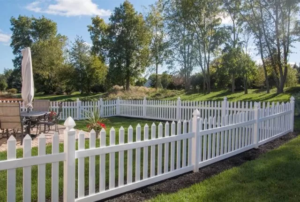Mesa Restaurants of all shapes and sizes are popular worldwide and generate huge amounts of economic activity. They range from inexpensive and informal lunching or dining establishments to expensive places offering refined food served in a formal setting.
The industry is constantly evolving driven by changes in work patterns, consumer trends, and disposable incomes. Technological advances such as online ordering and delivery platforms, contactless payment systems, and tabletop tablets enhance customer convenience and operational efficiency.

A French brasserie is a type of restaurant that offers traditional food in a relaxed setting. It is a good place to meet friends for lunch or dinner, and is known for its lively atmosphere and great selection of wine and beer. It is also a popular place for business meetings and groups. While it is more casual than a bistro, it is still classy and has professional service. It may serve wine by the glass or bottle, and typically has printed menus, white linen tablecloths and uniformed servers.
The name “brasserie” comes from the word “brewery,” and in fact, many of these restaurants once brewed their own beers. While they no longer brew their own beer, they still have an extensive selection of beers on tap and offer other drinks, as well. Brasseries are open throughout the day and night, making them ideal for anyone suffering from jet lag.
Although the term “brasserie” is French, it’s now found in other countries, including the UK and US. The cuisine is a mix of both traditional French dishes and tavern-style meals. The menus often feature a variety of steaks and fish dishes, as well as classic French dishes like coq au vin, moules frites and choucroute garnie, which is sauerkraut with cold meats and is a dish that originated in Alsace, the region of France that borders Germany.
Although the French culinary traditions have influenced chefs and food lovers all over the world, there are certain etiquette rules that must be followed when eating in a French restaurant. These rules include avoiding speaking with your mouth full, ordering wine by the glass or bottle, and not ordering food that has been sitting out too long. Aside from these etiquette tips, there are several other things to know about dining in a French restaurant. For example, there are specific utensils that must be used for certain dishes, and the menu will often include a description of how the dish should be eaten. In addition, the menu will usually list items that are served hot and cold, as well as those that can be ordered as a starter, main or dessert.
Bistro
Bistro restaurants are a unique type of eatery with a distinct ethos that blends casual comfort with epicurean exploration. They’re also known for their charming atmosphere and menus that feature both traditional and contemporary cuisine. Bistros have become a staple in many communities, and they continue to attract diners around the world with their unique offerings and charm.
The word “bistro” evokes images of warmth, authenticity, and community. Originally a term that simply described a small restaurant in Paris, the name has grown to encompass a wide range of dining establishments. Today, bistros are found worldwide and serve a variety of purposes from upscale cocktail lounges to family-friendly neighborhood eateries.
Although a bistro shares a lot of characteristics with cafes, there are several key differences that distinguish it from other types of restaurants. Both bistros and cafes feature cozy and intimate seating, but whereas the main focus of a cafe is often on socializing and drinking, a bistro places an emphasis on food service.
Another key difference is the level of formality. A bistro is typically less formal than a fine dining restaurant, with more casual service and food, and generally higher-quality food at moderate prices. It’s also less expensive than a high-end steakhouse or seafood restaurant.
While there are a few things that distinguish a bistro from other types of restaurants, it’s important to understand the different expectations that guests have when visiting this type of eatery. For instance, when guests visit a fine dining restaurant, they usually expect to be seated promptly and to receive impeccable service in a setting that’s elegantly decorated. They might anticipate a waitlist and printed menus, and they might expect to be served multiple courses of food in a leisurely manner.
While a bistro is more formal than a bar, it’s not as sophisticated as a fine dining restaurant. In fact, one legend credits the origin of the bistro to impatient Russian soldiers during Napoleon’s War who used to yell “bistro!” at local restaurants in order to get their meals faster. In comparison, a bar is a more casual venue that prioritizes the serving of alcohol and offers food as an additional amenity.
Fine Dining
Fine dining is an upscale restaurant experience that emphasizes luxury, sophistication, and attention to detail in cuisine and service. These establishments typically feature a high price point and require diners to adhere to certain rules of conduct, including a dress code.
Fine Dining Restaurants serve a wide variety of menu items, from classic comfort foods to innovative creations. They are generally characterized by a luxurious ambiance, sophisticated décor, and impeccable service standards. They offer a highly curated dining experience that showcases the culinary artistry of the chef and the quality of ingredients used in each dish.
While there are many misconceptions surrounding the concept of fine dining, it remains a popular choice for upscale diners who appreciate a refined atmosphere and exceptional food in an exclusive environment. While many people associate fine dining with expensive prices and excessive formality, the fine dining experience has become more inclusive in recent years to cater to a diverse range of patrons.
As the demand for fine dining continues to rise, many restaurateurs are adopting a more casual approach to their offerings. This may include offering a la carte options or chef’s tables that allow guests to interact directly with chefs and learn the techniques behind the dishes. Many also promote sustainable practices and local sourcing to appeal to eco-conscious consumers.
In addition, a number of restaurants have introduced fast fine dining to appeal to busy professionals who want to enjoy the quality and sophistication of a high-end restaurant without the wait time and pretensions associated with traditional fine dining. Some even feature a mix of the two styles, offering an upscale, chef-driven menu in a quick, casual setting.
For those who wish to open their own restaurant, understanding the different types of restaurants available is essential. This way, you can choose the best business model to suit your vision and goals. Moreover, you can make informed decisions about which type of restaurant to open based on the potential market opportunities and your budget. This will help you plan your menu, decor, and other aspects of your establishment to maximize success.
Casual Dining
Casual dining restaurants serve food at a reasonable price in a comfortable environment. They often offer a diverse menu and offer full table service. These restaurants are ideal for family meals, friend and coworker gatherings, or romantic dates. In contrast to fine dining, casual restaurants tend to be less formal and do not require a specific dress code.
Restaurants that fall under the casual category include Olive Garden, Outback Steakhouse, T.G.I Friday’s, and P.F. Chang’s China Bistro. Contemporary casual restaurants offer modern flair with an energetic vibe and innovative dishes and drinks. Their menus usually include a mix of classic comfort foods, familiar favorites, and new innovations in culinary creations. Their portion sizes are typically large and mid-range in price.
In contrast, fast-food or quick-service restaurants prioritize efficiency and convenience. These establishments usually offer counter service and minimal interaction with staff members. They may also offer a limited range of alcohol beverages, such as soft drinks, beer and wine.
Despite the popularity of fast-food restaurants, casual dining restaurants continue to thrive. These restaurants balance affordability with a high-quality experience, resulting in strong customer loyalty. They also have an edge over their fast-food competitors due to their more diverse menus and higher quality ingredients.
In the future, casual dining restaurants may use artificial intelligence (AI) to improve efficiency and reduce costs. AI could help with marketing and promotion, collecting and analyzing customer feedback, research and inspiration, logistical tasks such as purchasing management, and nutrition analysis. However, Do warns that it’s important to not use AI tools that completely replace human employees.
In the current economy, many restaurant operators are struggling to maintain profits. They face significant labor costs, rising food prices, and intense competition from retail, grocery stores, and quick-service restaurants. These trends are creating immense margin pressures for casual-dining restaurants. However, if restaurateurs understand these dynamics and manage their margins effectively, they can succeed in this competitive market. In a recent Datassential survey, three-quarters of casual dining restaurant operators reported struggling with labor-related issues including training and retention. Additionally, more than half of the respondents cited food-related challenges like pricing decisions, menu changes, and increasing ingredient usage.








